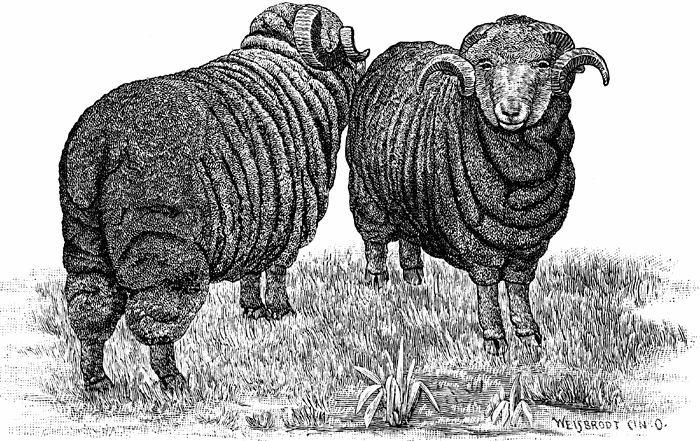Domestic wool production is one of the oldest industries in the United States. The first mill in Connecticut arrived in Hartford in 1788. Early domestic sheep were small and slow to mature, however, and this limited the success and spread of early wool manufacturing. It took the imperialist aspirations of Napoleon Bonaparte to help spread large-scale wool manufacturing to other areas in Connecticut, particularly Oxford.
In the late 18th century, many considered merino sheep, bred in Spain and famous for their weight and the excellent quality of their fleeces, to be the best in the world. The Spanish government placed rigid restrictions on their export, but Bonaparte’s invasion of Spain helped loosen these protectionist measures. Consequently, David Humphreys, a Connecticut native and minister to Spain, was able to procure 4,000 merino sheep for shipment to the US. Most of these sheep found their way to New York and New England, with a large portion arriving in Humphrey’s nearby hometown of Derby.
Merinos Spur Rise of Wool-related Enterprises
The arrival of merino sheep to the Naugatuck Valley coincided with the birth of large-scale manufacturing in the United States. By 1837, Oxford was a thriving mill town—with numerous gristmills and sawmills. Now home to over 3,000 sheep, many of them merinos, Oxford also became a leading producer of wool and fostered the development of numerous wool-related industries.
Cloth-making shops emerged in town, as did a small number of hat factories. Fulling mills (water-powered factories that treated cloth with a mixture of clay and water to absorb greasy wool residues) also became significant contributors to the local economy.
At the height of its productivity, three water-powered wool mills dominated the local industry. Samuel Wire ran the first, having learned the trade under the tutelage of David Humphreys. Wire ran a mill on Little River that was a complete carding, spinning, fulling, and cloth-manufacturing mill. James Dawson operated the second mill, and his facility on Eight Mile Brook operated well into the mid-19th century. The third wool manufacturing business belonged to David Tomlinson. Tomlinson’s enterprise changed ownership numerous times throughout the early 1800s. By 1850, however, the business started by Tomlinson manufactured “satinet,” a twilled cloth of cotton and wool—and a precursor to the abundant selection of blended fabrics available to consumers today.








